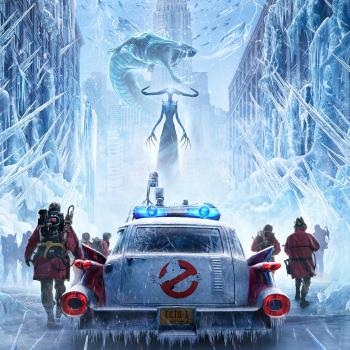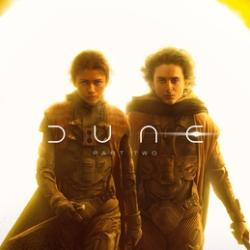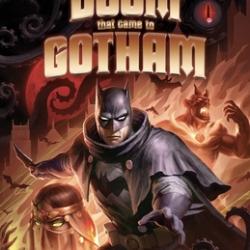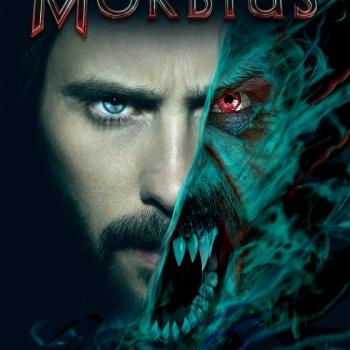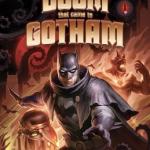By CHRISTIAN HAMAKER
It’s a well-established truth that Oscar-nominated films in the Best Picture category are about Important Topics, and thus demand long running times. Sometimes those running times are justified, but it’s not unusual for a Best Picture nominee to wear out its welcome well before the final credits roll. This year, eight of the nine films nominated for Best Picture clock in at more than two hours.
While the masses flock to see films in the major categories, film aficionados look down their Oscar ballots to other categories of interest. The 2012 Oscar-nominated short films—both live-action and animated—provide the energy and thoughtfulness that sometimes elude the major Oscar contenders.
You can check out the shorts at select theaters. And the crop is worth seeking out, especially the live-action shorts—nearly all of which are superior in themes and execution to every commercially released feature so far in 2013. Here’s a quick overview of the animated and live-action shorts, each group of which clocks in at about the length of one Best Picture candidate.
Animated Shorts
Less arresting than this year’s live-action shorts, most of the Oscar-nominated animated shorts rise only to the level of diverting. Only one short merits your attention with its highly provocative content.
All five animated shorts had been available online until recently, but as of this writing, only two—the wonderful Paperman and inventive Fresh Guacamole—remain posted.
Maggie Simpson in “The Longest Daycare”
The familiar Simpsons vibe permeates the story of young Maggie finding a way to outsmart a sadistic fellow daycare student who delights in smashing butterflies. Lots of sight gags and a few too many easy shots at Ayn Rand mark this short.
Adam and Dog
The best of this year’s animated shorts opens with a dog marking his territory as he wanders a thickly wooded, vegetation-rich area. A hairy mastodon sets its leg down near the dog, making clear that this is a place where certain animals that don’t normally mix live together in harmony.

Man then appears in the form of a naked Adam, and those who haven’t figured out that this colorful, beautiful terrain is none other than Eden are soon keyed into that fact. After offering the dog a few morsels of food, the dog quickly becomes man’s best friend.
Their bond grows until it is threatened by Adam’s interest in the newly arrived Eve. But more calamitous is the event that takes place off screen, introducing death into the world and leading to Adam and Eve’s being cast out of the garden. Yet some forms of fellowship survive.
The timeless thematic qualities of Adam and Dog are complemented by luminous colors and visual surprises, making this short the best of the animated litter this year.
Fresh Guacamole
Short and sweet, vegetables get diced and turn into—well, dice! Clever and entertaining, if inconsequential.
Head Over Heels
Close to a live-action Escher cartoon, where angles are less important than whether something is upside-down or right side up. The only non-U.S. entry among the nominated animated shorts, Head Over Heels is touching but—based on my struggles to recollect it a couple of weeks later—rather forgettable.
Paperman
From executive producer John Lasseter and the folks at Disney Animation, this is a delightful story of a man’s attempts to get the attention of a woman. An ode to the paper airplane and to the throes of first love, with some office-culture wit supplementing and complicating the protagonist’s efforts, Paperman is the most polished crowd-pleaser among this year’s lot of nominees But it’s hard to get excited at the prospect of Lasseter receiving more awards attention, earned or not.
Live-Action Shorts
This year’s live-action shorts are, in a word, superb. Of the five nominated films, four are exceptional, with Curfew the only disappointment.
Henry
An elderly pianist remembers the beautiful music he made with his wife, a violinist, around the time of World War II. Is the wife still alive? What about their daughter? Memory and the frailties of aging are more poignant here than they are even in the similarly themed Best Picture candidate Amour, and the film’s concluding question, “Have I been a good man?” brings to mind a previous Best Picture candidate, Saving Private Ryan. Heartfelt and moving.
Asad
Portraying the perils of life among warlords in Somalia, where, according to Asad’s mother, “only fate can protect [them]” from “crazy soldiers.” Asad stands up to the thugs, but death is all around—even when he takes a boat out on the open water and tries to fish for the first time. Marked by accomplished open-water cinematography and nicely lit interior shots, Asadfalters only when it tries to pivot to an uneasy optimism. Although the attempt at an upbeat ending feels false, it’s a respite after repeated exposure to the harsh realities that surround Asad.

Death of a Shadow
Vivid and imaginative, Death of a Shadow posits a Faustian tale of a man who photographs the shadows of dying individuals. Those photos are then critiqued by a mysterious boss who sends the photographer out on his assignments.
“Why cling to life?” the boss asks. “So little happiness, so much suffering. I can show you the true beauty of death.” Indeed, the photographer will be forced to confront painful memories of his earlier life—but at what cost?
A hopelessness permeates Death of a Shadow, which is best appreciated as an artful Twilight Zone episode with strong production design. While its treatment of human pain and romantic love are easy to identify with, the film’s picture of a sadistic god-like figure behind the curtain of human experience is harsh and unforgiving.
Curfew
If you have fond memories of foreign films of the 1980s and 1990s that featured forlorn adults finding joy and inspiration through the companionship of young children—think Cinema Paradiso, Central Station and Life Is Beautiful— then Curfew is for you.
A suicidal man is called to watch a woman’s young child while the mother is otherwise occupied. The nature of the adults’ relationship is revealed only later, but we know that the man is filled with despair—and that the child may have something to do with that.
Over the course of the night, the child gradually draws out the source of the man’s pain and regret, and as she does, the film takes flights into fancy. (In one out-of-the-blue sequence, the short mimics a music video.)
Although Curfew traffics in relatable emotions, it feels too familiar, too obvious. We root for its protagonist—anything short of suicide for the depressed individual is a form of moral victory—but we sense where the story is going every step of the way. Even when the story finds its way to hope, it doesn’t feel earned. It’s a cliché rather than a moment of grace.
Buzkashi Boys
One boy is apprenticing to be a blacksmith, as his father and grandfather were. The other boy is homeless, a beggar who shouts insults at drivers who refuse to give him anything. (“I will pray you have a better car!”) They live in Kabul, and their lives are going in different directions.
The homeless boy dreams of one day being a Buzkashi rider. If you’re not familiar with Buzkashi, don’t worry: One boy explains the rules as he and his friend watch a Buzkashi contest from a perch high above Kabul.
Deeply melancholy and accented by a lovely score, Buzkashi Boys is no less predictable in its outcome than is Curfew, but its finale feels inevitable and, sadly, appropriate to the desperate circumstances of its young characters.
While I can’t predict which films will win the Oscars for Best Animated Short and Best Live Action Short, I do know where my votes would go. For animated short, it’s an easy call for Adam and Dog, with Paperman as runner-up. For the live-action category, I’d go with the short that moved me most deeply, and that would be Henry.



